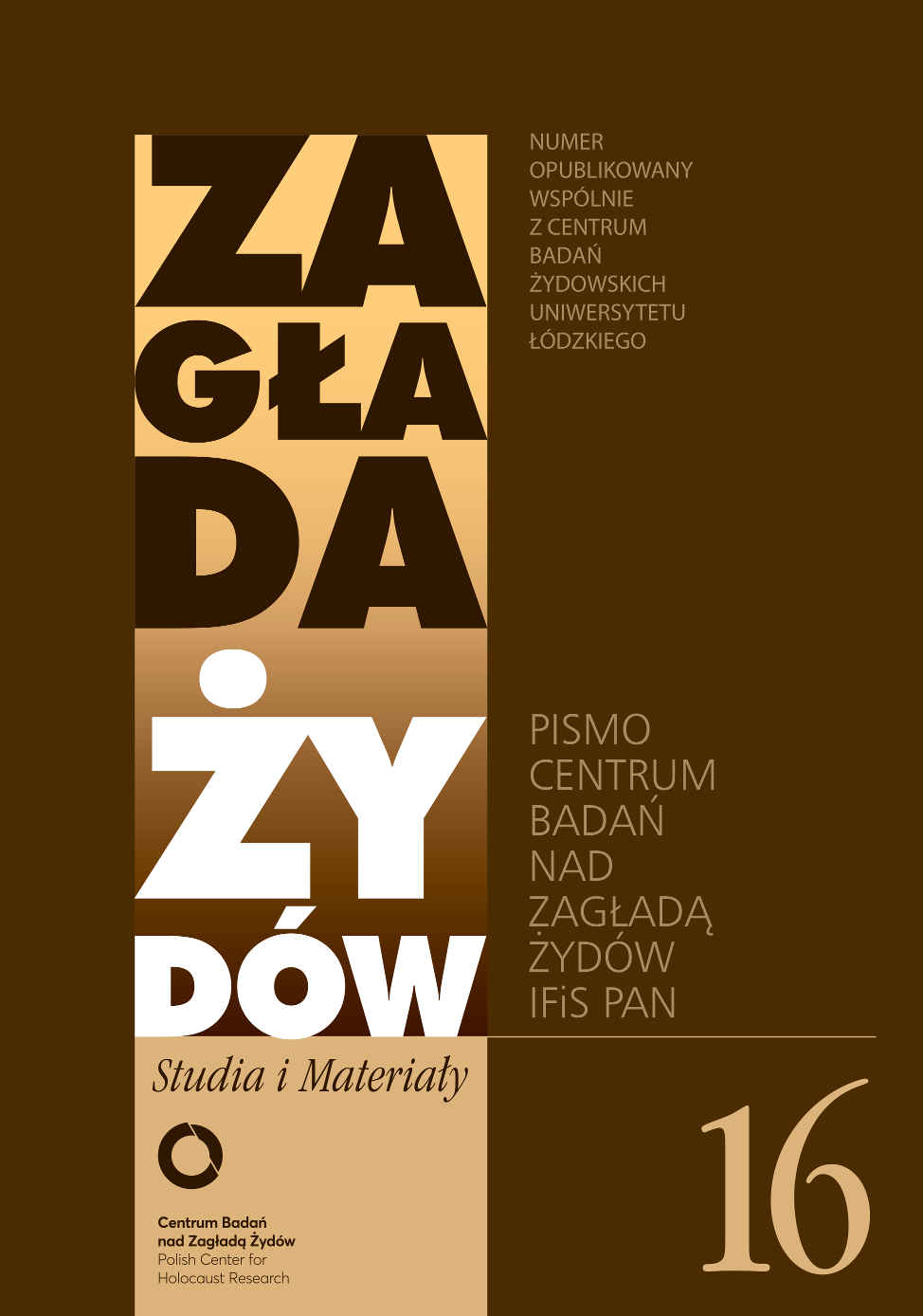No. 16 (2020)
The main theme of the 16th issue of our annual is the 75th anniversary of the liquidation of the Łódź ghetto. We publish, for instance, Marian Turski’s testimony, Andrzej Czyżewski’s study on the historical policy of the communist authorities of Poland concerning the ghetto, Ewa Wiatr’s article about youth groups in Marysin, and Irmina Gadowska’s text about painters. Adriana Bryk discusses the history of the the postal services in the ghetto, Krystyna Radziszewska describes the lot of European Jews deported to the ghetto, Andrzej Grzegorczyk discusses the organization of the first wave of deportations from the ghetto, Jacek Walicki compares the functioning of the ghetto archives, and Sylweriusz Królak analyzes descriptions of walks in the two ghettoes. We also publish Viktor Hahn’s ghetto diary and Mordechaj Żurawski’s testimony.
This issue is published in cooperation with the Jewish Research Center of the University of Łódź. Ewa Wiatr and Adam Sitarek joined our editorial staff as guests.
 English
English
 Język Polski
Język Polski



